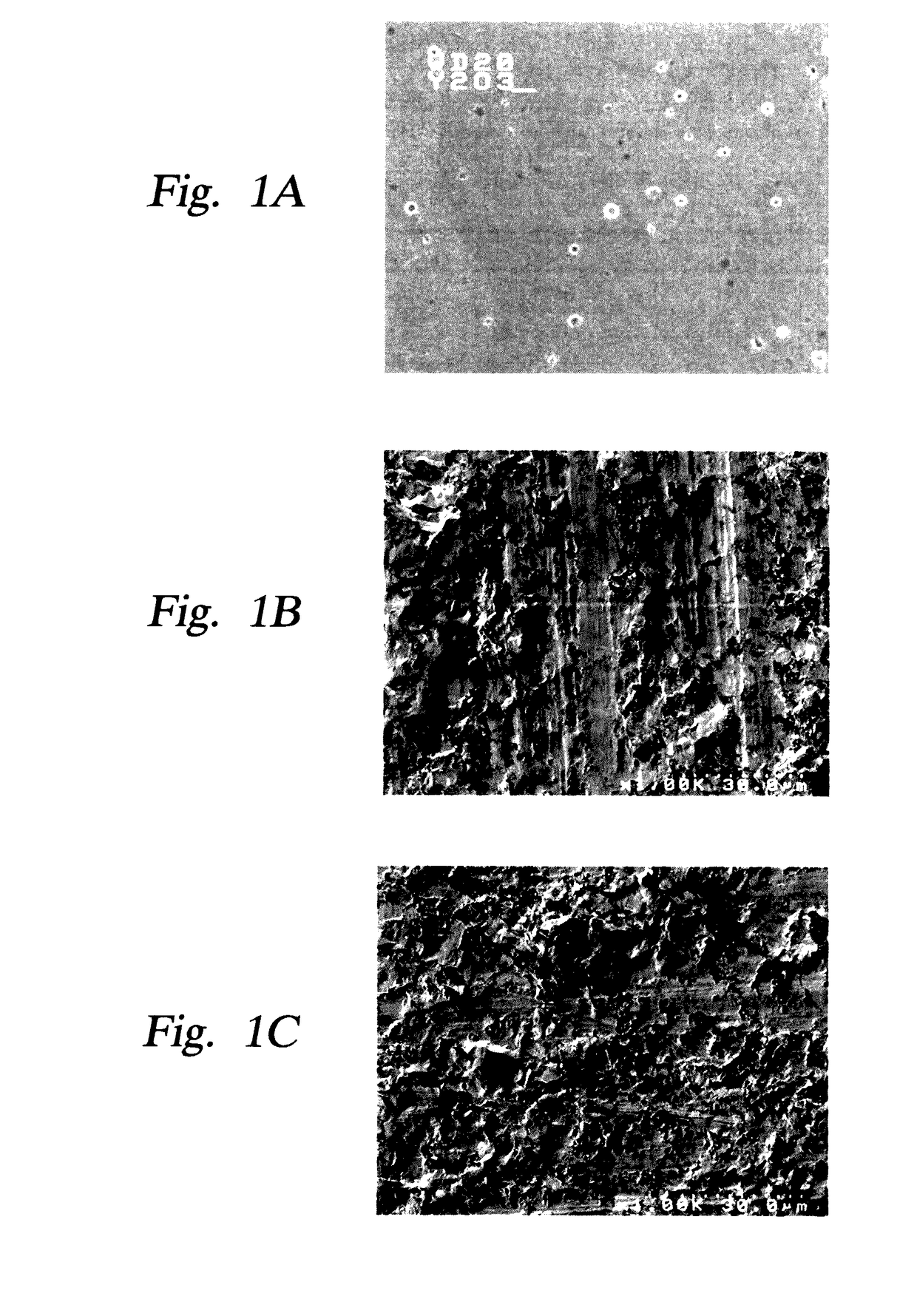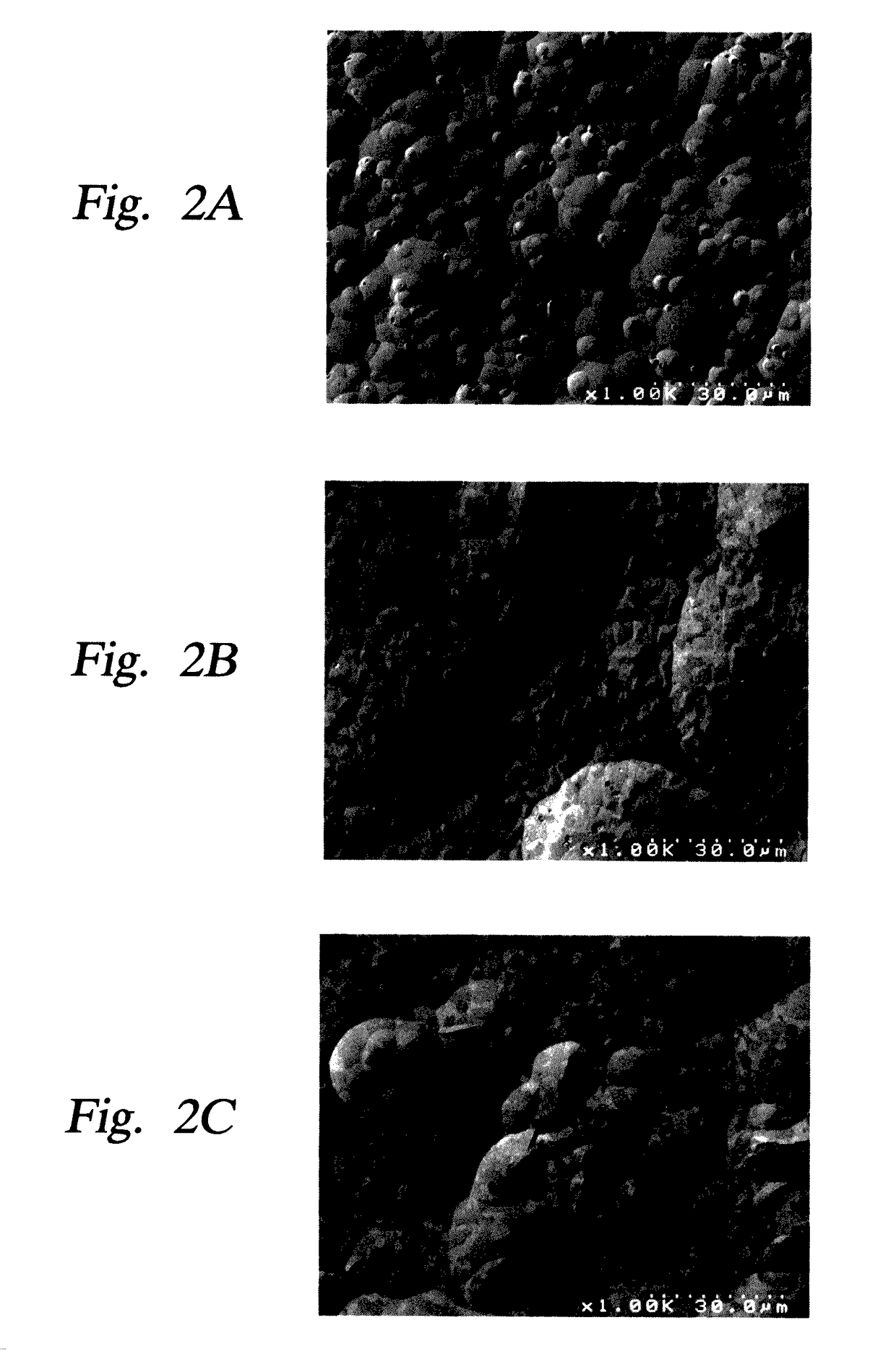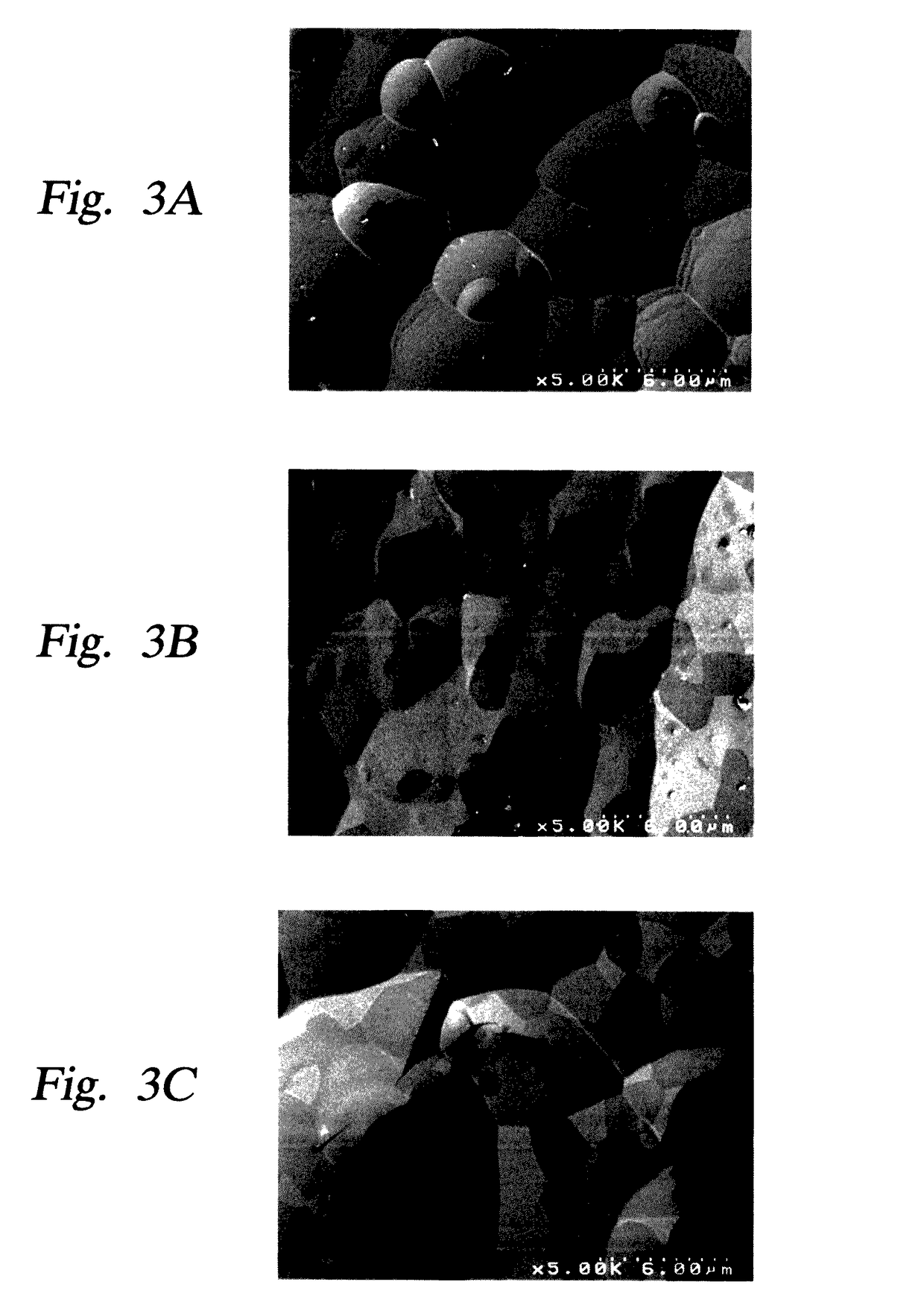Bulk sintered solid solution ceramic which exhibits fracture toughness and halogen plasma resistance
- Summary
- Abstract
- Description
- Claims
- Application Information
AI Technical Summary
Benefits of technology
Problems solved by technology
Method used
Image
Examples
example embodiments
Example One: Etch Plasma Process Conditions for Erosion Rate Testing
[0044]Tables One-Three, below, provides the etch plasma compositions and etch plasma processing conditions which were used for evaluation of a series of test coupon materials. There were three basic different sets of etch plasma conditions which were used for the erosion rate testing: 1) Trench etching, where the etch plasma source gas and etch process conditions were representative of etching a trench feature size beyond 65 nm technology, i.e. smaller than 65 nm, into a multilayered semiconductor substrate. Such a substrate typically includes an antireflective coating (ARC or BARC) layer, an organic or inorganic dielectric layer, a metal layer, and an etch stop layer. Contact Via etching, where the etch plasma source gas and etch process conditions were representative of etching a contact via having an aspect ratio of about 30 in production and 40 plus in the developed device substrate, and having a diameter of bey...
example two
Relative Erosion Rates of Various Ceramic Materials Compared with Aluminum Oxide
[0046]Aluminum oxide has frequently been used as a protective layer or liner when a semiconductor process makes use of an etchant plasma. Using aluminum oxide as the base comparative material, we determined the relative etch rates, in a Trench Etch (CF4 / CHF3) environment. With aluminum oxide having a relative erosion rate of 1, we found that the relative erosion rate of quartz was about 2.2 times that of aluminum oxide. The relative erosion rate of silicon carbide was about 1.6 times that of aluminum oxide. The relative erosion rate of zirconia was about 0.8 times that of aluminum oxide. The relative erosion rate of pure yttrium oxide was about 0.19 times that of aluminum oxide. The relative erosion rate of a yttrium oxide, zirconium oxide, aluminum oxide ceramic composite, formed from 55 mole % yttrium oxide, 20 mole % zirconium oxide, and 25 mole % aluminum oxide was about 0.2 times that of aluminum ox...
example three
ion Rates for Trench Etching Process
[0047]With reference to the trench etching method described above, the sample substrate test coupon erosion rates measured were as follows. The erosion rate of aluminum oxide was 1.1 μm / hr. The erosion rate of bulk yttrium oxide was 0.3 μm / hr. The erosion rate of a the a yttrium oxide, zirconium oxide, aluminum oxide ceramic composite, formed from 55 mole % yttrium oxide, 20 mole % zirconium oxide, and 25 mole % aluminum oxide was 0.1 μm / hr. The erosion rate of a yttrium oxide, zirconium oxide, aluminum oxide ceramic composite, formed from 63 mole % yttrium oxide, 23 mole % zirconium oxide, and 14 mole % aluminum oxide was 0.07 μm / hr.
PUM
 Login to View More
Login to View More Abstract
Description
Claims
Application Information
 Login to View More
Login to View More - R&D
- Intellectual Property
- Life Sciences
- Materials
- Tech Scout
- Unparalleled Data Quality
- Higher Quality Content
- 60% Fewer Hallucinations
Browse by: Latest US Patents, China's latest patents, Technical Efficacy Thesaurus, Application Domain, Technology Topic, Popular Technical Reports.
© 2025 PatSnap. All rights reserved.Legal|Privacy policy|Modern Slavery Act Transparency Statement|Sitemap|About US| Contact US: help@patsnap.com



